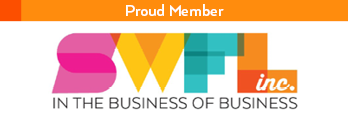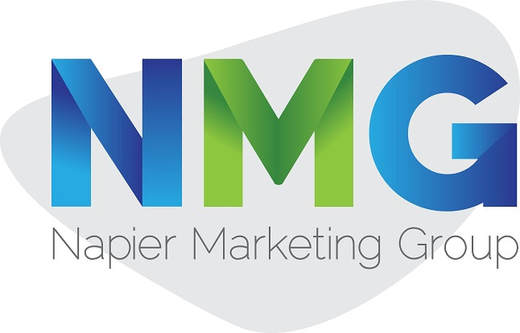Top 10 Product Discovery Techniques You Need To Know
Every startup and company is trying to optimize its product discovery process. But not all are equally efficient in it. Often a few tweaks and a change in approach are all you need to make your product discovery process more effective.
But first, What is product discovery?
To put it simply, the product discovery process is a system of analyzing and discovering what new products the market needs.
Every startup or company would have its own set of rules and protocols they follow, but the underlying structure remains roughly the same.
Once the basics of product discovery are clear, you can move towards techniques and solutions that make product discovery easier.
But first, What is product discovery?
To put it simply, the product discovery process is a system of analyzing and discovering what new products the market needs.
Every startup or company would have its own set of rules and protocols they follow, but the underlying structure remains roughly the same.
Once the basics of product discovery are clear, you can move towards techniques and solutions that make product discovery easier.
Top 10 product discovery techniques you need to know
We have curated a list of the ten most effective product discovery techniques.
If you incorporate these techniques into your product discovery process, you will come up with new ideas easily and effectively. However, remember that every team has a distinct approach to product discovery.
Always ensure the techniques you choose align with the overall motto of your business.
Without further ado, let’s move to the top ten product discovery techniques you must know to create a useful and user-friendly product.
1. Ask your customers
It sounds obvious to ask direct questions to your customers when trying to come up with new product ideas, but many companies and teams overlook it.
Presenting a questionnaire to your customers is different from asking them to fill out a survey. In a survey, you are asking them about their experiences. In a face-to-face (or virtual) customer interview, you are asking your customers what they want or find lacking.
When asking questions to customers about what product or feature they want, it is very important to keep the questions straightforward. If you are demanding too much effort from your customers, they are more likely to back out.
Make your questions inquisitive, yet simple to answer. This simple method will give a boost to your product discovery process.
2. Analyze your competition
If you incorporate these techniques into your product discovery process, you will come up with new ideas easily and effectively. However, remember that every team has a distinct approach to product discovery.
Always ensure the techniques you choose align with the overall motto of your business.
Without further ado, let’s move to the top ten product discovery techniques you must know to create a useful and user-friendly product.
1. Ask your customers
It sounds obvious to ask direct questions to your customers when trying to come up with new product ideas, but many companies and teams overlook it.
Presenting a questionnaire to your customers is different from asking them to fill out a survey. In a survey, you are asking them about their experiences. In a face-to-face (or virtual) customer interview, you are asking your customers what they want or find lacking.
When asking questions to customers about what product or feature they want, it is very important to keep the questions straightforward. If you are demanding too much effort from your customers, they are more likely to back out.
Make your questions inquisitive, yet simple to answer. This simple method will give a boost to your product discovery process.
2. Analyze your competition
|
We analyze competition frequently when it comes to product marketing, but not so much with product discovery.
No, that doesn’t mean you need to clone your competitor’s ideas into your own products. Doing so would be inefficient for two reasons. Firstly, if you are not offering anything new, there is no incentive to switch products. Secondly, you wouldn’t be able to capture a new section of the market or carve a niche. Competition analysis gives you a clear understanding of where the market stands, what is in demand and what is not. |
This information would be very useful when trying to come up with new product ideas. You get a base from which you can identify the loopholes and capitalize on them.
3. Engage in product discovery consistently
We often make the mistake of not employing continuous product discovery strategies and instead relying on specific needs.
The problem with this approach is that it begins with an answer and then looks for the question. You are hoping that the need of the hour is a specific product, while it may not be so at that specific point in time.
When you employ continuous product discovery strategies, you are constantly on the lookout for identifying new areas. It is particularly helpful since demands and scarcities are not time bound. They can emerge in moments when we expect them the least. That’s why it is more efficient to never put a complete halt on your product discovery efforts.
4. Do not employ aimless product discovery methods
When we say aimless product discovery methods, we mean approaching the problem for the sake of approaching.
Think of it along the lines of launching a new product for the sake of the launch and surrounding publicity, when you have nothing new or better to offer.
There is a fundamental flaw in this approach, but product discovery teams often engage in it due to mismanagement, last-minute rush, and an overall lack of planning.
Do not innovate for the sake of innovation. Identify a target area first, then understand how you can contribute to it. Move forward with a plan only when you know what you can offer has some value. Otherwise it’ll be nothing more than a waste of time and money.
5. Prioritize the feedback process
We often prefer giving customers and users a window before asking them for feedback. While the rationale behind it is sound, it does not offer efficiency to product discovery techniques.
When you are trying to discover products, you should ask for feedback as early as possible, and as often as possible.
Getting early feedback will help you understand the first problems your customers face.
Frequent feedback will tell you how it performs on a long-term, day-to-day basis. If you are waiting for too long before asking for feedback, you will lose the opportunity of understanding the initial problems, and what scope these problems offer. Getting early and frequent feedback will become a key factor in your product discovery techniques.
6. Make product discovery a cumulative effort.
While there is dedicated product discovery management in many firms and startups, isolating the work to a single department is a mistake. We must understand that product discovery is not something that people learn in textbooks.
Experts are where they are after first-hand encounters and different work experiences. You never know who in your team would come up with the breakthrough idea. That’s why it is important to bring everyone on board.
Be open to ideas, no matter where they come from. Seek assistance when you need it, and do not make your product discovery team a watertight space. Bringing in more people means opening up to new ideas.
7. Imagine what your customers want
Technically called creating user personas, it essentially means trying to figure out what your customers would want. You do so by trying to put yourself in their shoes: how do they think, what do they want, what do they hate, and more.
Creating user personas has many benefits, and it can make your product discovery process much easier.
Intensive research is a must to create user personas. These personas would not be imaginary, rather a depiction of what user data tells us. By taking into account these data, we can effectively simulate what a customer would want in a certain scenario or product.
If conducting direct customer interviews is not possible, creating user personas is often as effective, if not more. If done correctly, user personas can tell you a lot about demands and potential in the market.
8. Never outsource product discovery
Outsourcing has its merits, but it would be wiser to not outsource the product discovery process. There are many reasons behind this.
If your creators and engineers are not actively engaged in the product discovery process, it would lead to a mismatch between the idea and the end product.
Outsourcing product discovery would also lead to needless time and resource wastage.
Often the data would have different interpretations, and there can be a clash between the client and the outsourcing company. If your developers are not on board with the product discovery method, it will lead to a further waste of time and risk of miscommunication.
Outsourcing works great in many sectors, but product discovery is not one of them.
9. Use product analytics
3. Engage in product discovery consistently
We often make the mistake of not employing continuous product discovery strategies and instead relying on specific needs.
The problem with this approach is that it begins with an answer and then looks for the question. You are hoping that the need of the hour is a specific product, while it may not be so at that specific point in time.
When you employ continuous product discovery strategies, you are constantly on the lookout for identifying new areas. It is particularly helpful since demands and scarcities are not time bound. They can emerge in moments when we expect them the least. That’s why it is more efficient to never put a complete halt on your product discovery efforts.
4. Do not employ aimless product discovery methods
When we say aimless product discovery methods, we mean approaching the problem for the sake of approaching.
Think of it along the lines of launching a new product for the sake of the launch and surrounding publicity, when you have nothing new or better to offer.
There is a fundamental flaw in this approach, but product discovery teams often engage in it due to mismanagement, last-minute rush, and an overall lack of planning.
Do not innovate for the sake of innovation. Identify a target area first, then understand how you can contribute to it. Move forward with a plan only when you know what you can offer has some value. Otherwise it’ll be nothing more than a waste of time and money.
5. Prioritize the feedback process
We often prefer giving customers and users a window before asking them for feedback. While the rationale behind it is sound, it does not offer efficiency to product discovery techniques.
When you are trying to discover products, you should ask for feedback as early as possible, and as often as possible.
Getting early feedback will help you understand the first problems your customers face.
Frequent feedback will tell you how it performs on a long-term, day-to-day basis. If you are waiting for too long before asking for feedback, you will lose the opportunity of understanding the initial problems, and what scope these problems offer. Getting early and frequent feedback will become a key factor in your product discovery techniques.
6. Make product discovery a cumulative effort.
While there is dedicated product discovery management in many firms and startups, isolating the work to a single department is a mistake. We must understand that product discovery is not something that people learn in textbooks.
Experts are where they are after first-hand encounters and different work experiences. You never know who in your team would come up with the breakthrough idea. That’s why it is important to bring everyone on board.
Be open to ideas, no matter where they come from. Seek assistance when you need it, and do not make your product discovery team a watertight space. Bringing in more people means opening up to new ideas.
7. Imagine what your customers want
Technically called creating user personas, it essentially means trying to figure out what your customers would want. You do so by trying to put yourself in their shoes: how do they think, what do they want, what do they hate, and more.
Creating user personas has many benefits, and it can make your product discovery process much easier.
Intensive research is a must to create user personas. These personas would not be imaginary, rather a depiction of what user data tells us. By taking into account these data, we can effectively simulate what a customer would want in a certain scenario or product.
If conducting direct customer interviews is not possible, creating user personas is often as effective, if not more. If done correctly, user personas can tell you a lot about demands and potential in the market.
8. Never outsource product discovery
Outsourcing has its merits, but it would be wiser to not outsource the product discovery process. There are many reasons behind this.
If your creators and engineers are not actively engaged in the product discovery process, it would lead to a mismatch between the idea and the end product.
Outsourcing product discovery would also lead to needless time and resource wastage.
Often the data would have different interpretations, and there can be a clash between the client and the outsourcing company. If your developers are not on board with the product discovery method, it will lead to a further waste of time and risk of miscommunication.
Outsourcing works great in many sectors, but product discovery is not one of them.
9. Use product analytics
|
If you are not integrating your products with any kind of analytics, you are losing out on wonderful opportunities. We primarily use product analytics data to gauge its performance over the long term. However, this data also reveals a lot about lacking areas and possibilities of an emerging scope. We underestimate the value of quantitative data with respect to product discovery. If used correctly, quantitative data can reveal trends and patterns of demands and needs. From these patterns, you can find what would work in the market and how you can capitalize on it. Integrating analytics in products is very important in 2021 since there are multiple uses of this data. |
10. Speed up the process with mental maps
Human minds are wired to perceive images better than text. Sometimes, a good mental map is all it takes to come out of a slump.
The great advantage of mental maps is that it gives you the chance to bring the whole team together. Everyone can put forward their maps, and it can lead to one composite map that has the answer you’ve been looking for.
Mental maps are a great way to brainstorm new ideas.
A map gives you a navigable course of action, and everyone can add their input while focusing on the common goal. If you are not using maps in your product discovery techniques, you are missing out on the chance to speed up the process.
Conclusion
As you can see, product discovery is a complex process with multiple factors to take care of.
Having an incorrect approach or choosing inefficient methods can derail your team’s efforts. If you follow these ten techniques, you can avoid the common pitfalls of product discovery.
Human minds are wired to perceive images better than text. Sometimes, a good mental map is all it takes to come out of a slump.
The great advantage of mental maps is that it gives you the chance to bring the whole team together. Everyone can put forward their maps, and it can lead to one composite map that has the answer you’ve been looking for.
Mental maps are a great way to brainstorm new ideas.
A map gives you a navigable course of action, and everyone can add their input while focusing on the common goal. If you are not using maps in your product discovery techniques, you are missing out on the chance to speed up the process.
Conclusion
As you can see, product discovery is a complex process with multiple factors to take care of.
Having an incorrect approach or choosing inefficient methods can derail your team’s efforts. If you follow these ten techniques, you can avoid the common pitfalls of product discovery.





